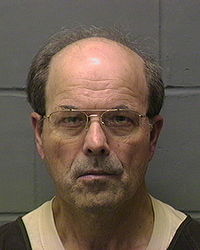Space exploration is risky. Very risky. We all remember the two shuttle disasters: Challenger (STS-51) on January 28, 1986 and Columbia (STS-107) on February 1, 2003. For a boy who grew up in Huntsville Alabama with the space program in his backyard, these tragedies hit very close to home. Much of the shuttle was built at Huntsville’s Marshall Space Flight Center near in my hometown. In fact, throughout my life I have followed the space program very closely.
I met Werner von Braun on many occasions, the first being when I was in the 5th grade. I remember the ground shaking his rocket testing caused, interrupting baseball games and other activities. I was at the launch of Apollo 11, July 16, 1969 at 9:32 AM. I remember it like yesterday. And then on December 9, 2006, Nan and I attended the nighttime launch of the Discovery (STS-116) spacecraft as guest of NASA. It was also a great experience and the launch was breathtaking. For me, besides the launch itself, the highlight of that visit back to Cape Canaveral was meeting Edgar Mitchell, the sixth man to walk on the moon. He served as Lunar Module Pilot on Apollo 14, and flew along with Commander Alan Shepard, one of the original 7 astronauts, and Command Module Pilot Stuart Roosa. Mitchell and Shepherd stepped on the moon on February 5, 1971.

This Apollo 14 flight was the next in line after the near disaster of Apollo 13. That was an incredible adventure where James Lovell, John Swigert, and Fred Haise were nearly lost in space. I remember the city of Huntsville basically shutting down as every scientist in the area moved out to Marshall and worked around the clock, frantically attempting to jury-rig the space craft and bring the three astronauts safely home. Fortunately, they succeeded.
Apollo 13, the movie about this journey, followed the actual events almost to the letter. Many years ago I met Ron Howard at the then Maui Writers Conference. I thanked him for doing the story straight up and not turning it into some Hollywood bastardization of a truly heroic event. Interestingly, he said that the studios actually did try to change the story but that he and Tom Hanks stood firm and demanded that the script follow the reality. I thank Ron Howard for that to this day. If you’ve never seen this movie, you should.
But earlier in the space program there were also disasters for both us and the Russians. I vividly remember Apollo 1, where Virgil “Gus” Grissom, also one of the original 7 astronauts, Ed White, and Roger Chaffee perished in a capsule fire. This was severely damaging the space program and almost derailed JFK’s promise of putting a man on the moon before the end of the decade. But during those times NASA was invincible and pressed on. Few people realize that the Apollo 1 disaster took place on January 27, 1967, a scant 2 1/2 years before Neil Armstrong stepped on the moon. Heady times and great memories.



































